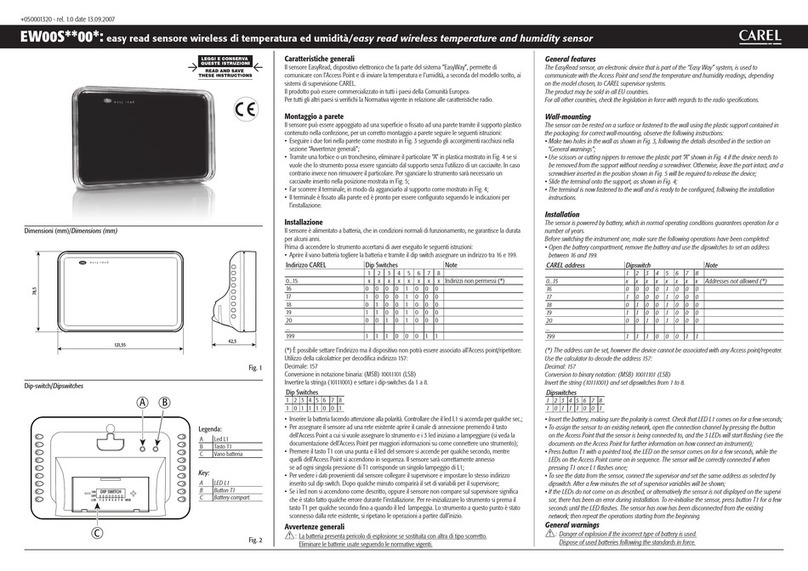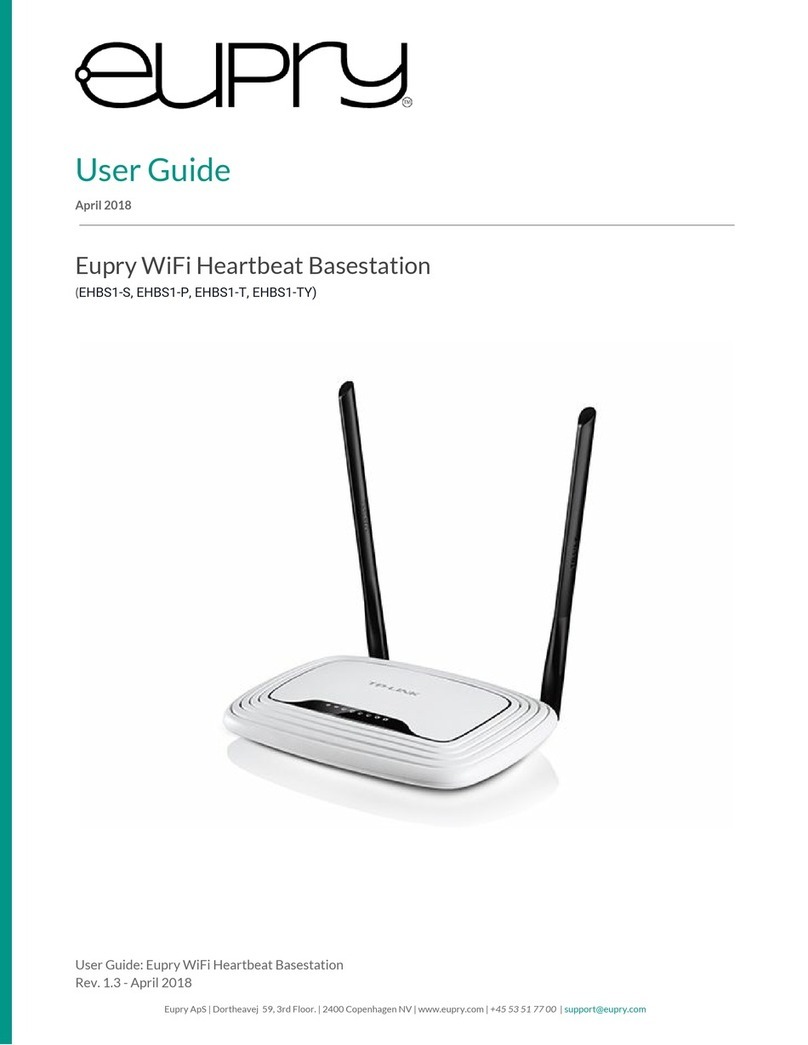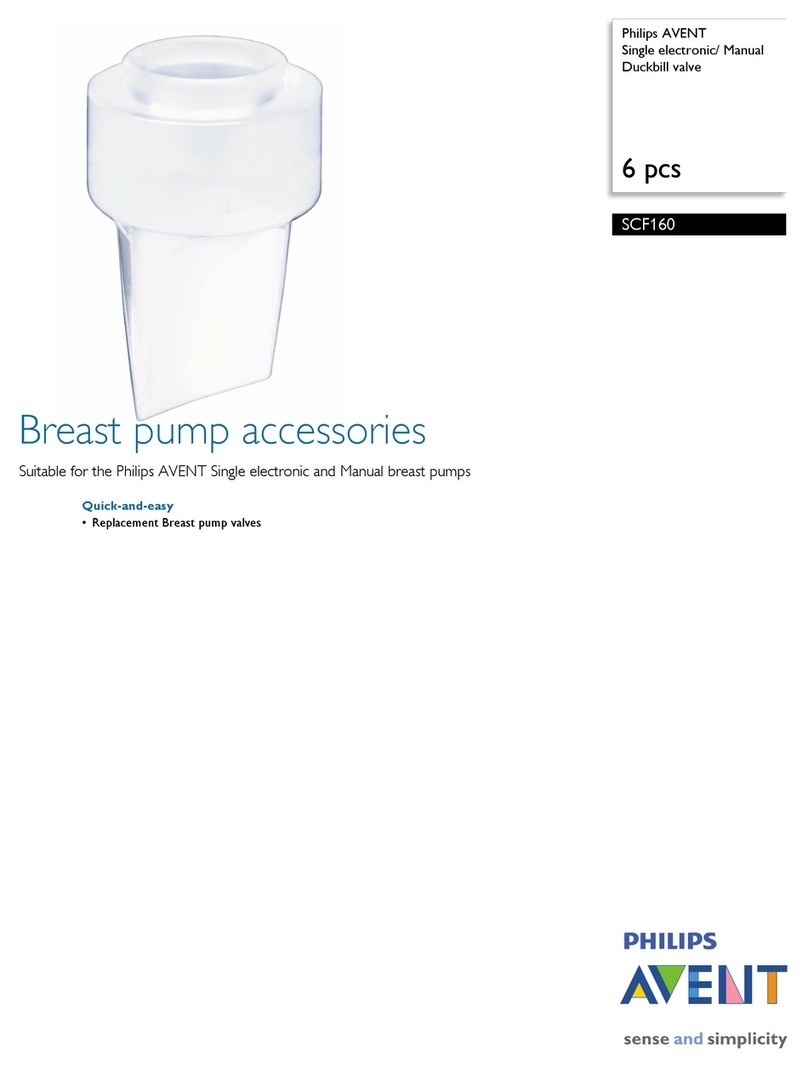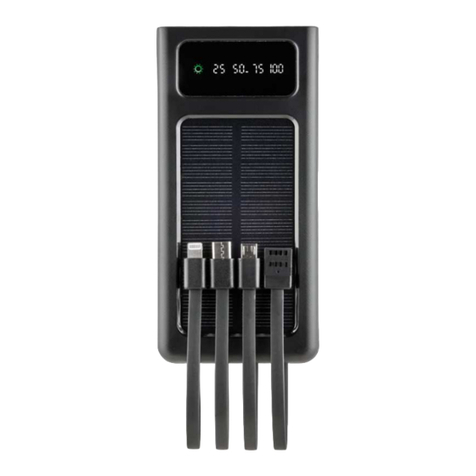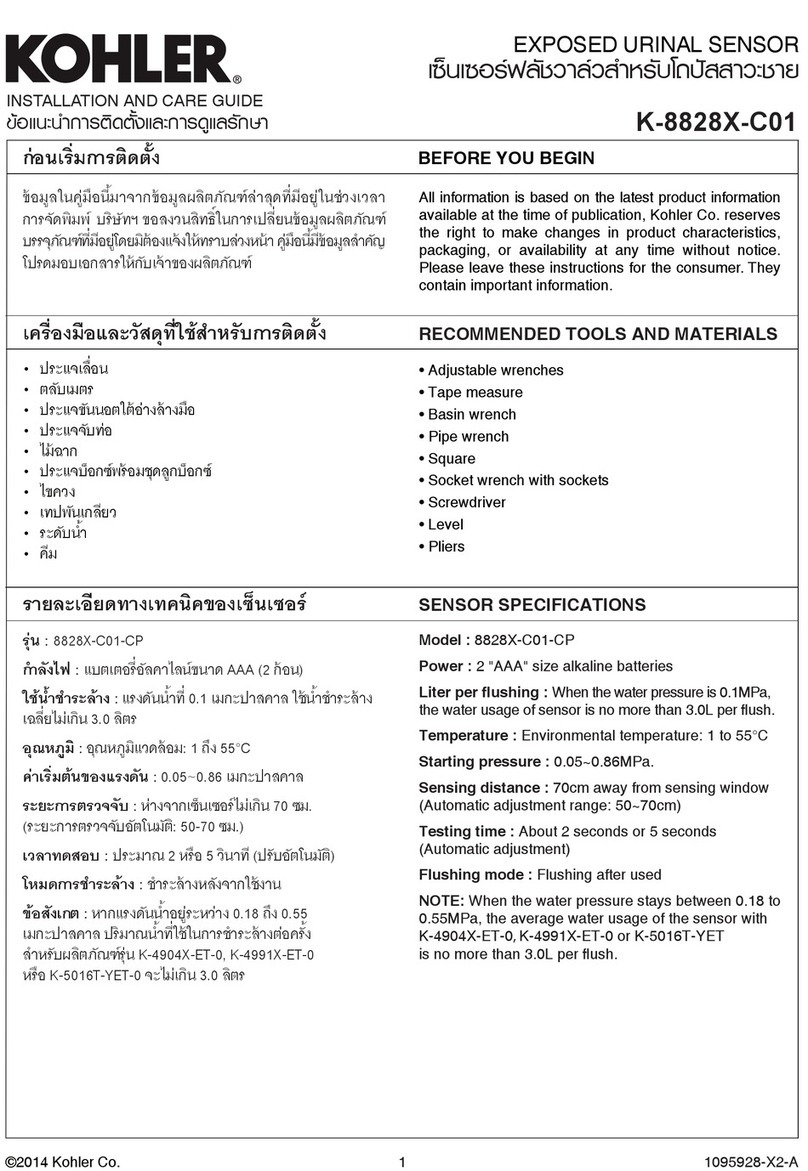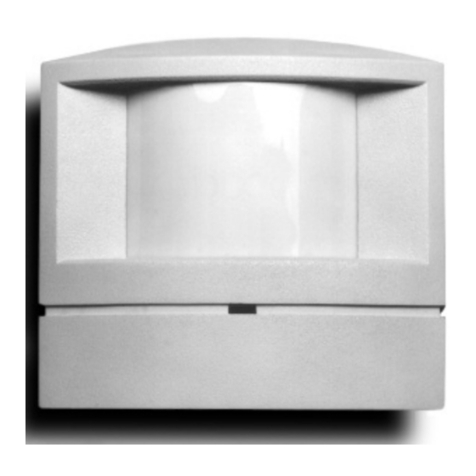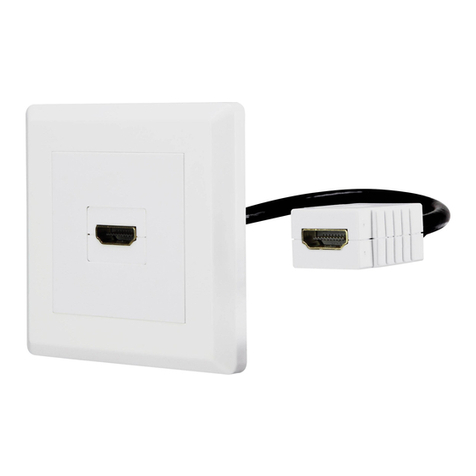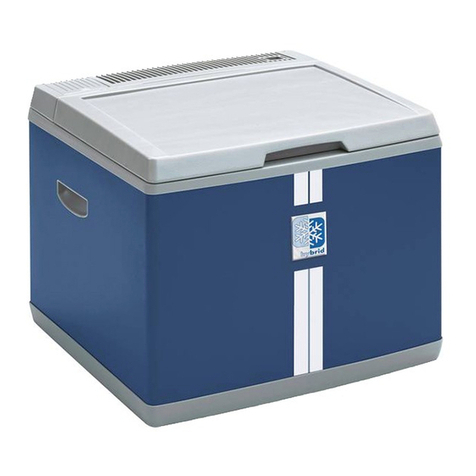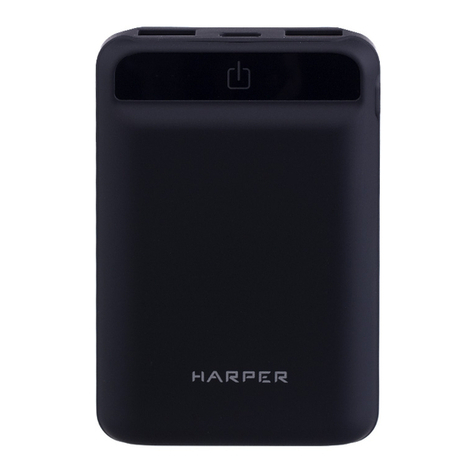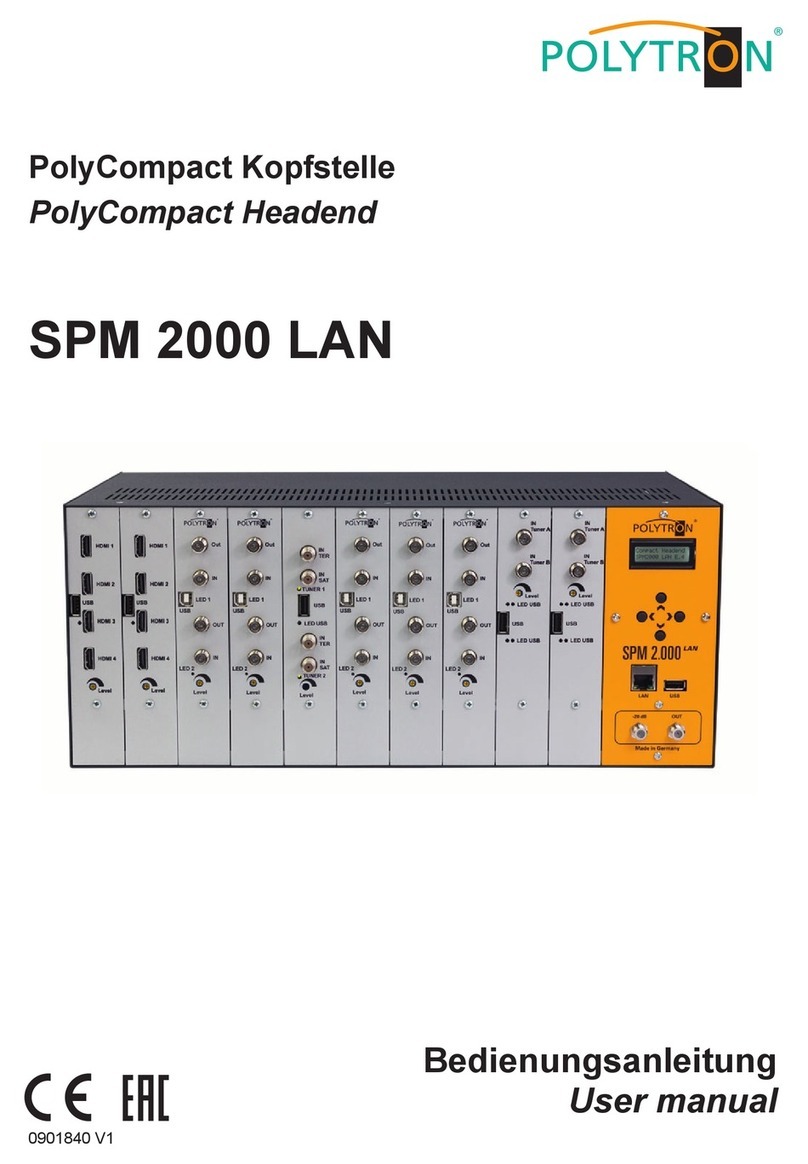Met One 50.5 User manual

50.5-9800 Rev C.doc
1600 Washington Blvd.
Regional Sales & Service
Grants Pass, Oregon 97526 3206 Main St. Suite 106
Telephone 541-471-7111 Rowlett, Texas 75088
Facsimile 541-541-7116 Telephone 972-412-4715
Facsimile 972-412-4716
MODEL 50.5
WIND SENSOR
OPERATION MANUAL
Document No. 50.5-9800
Met One
Instruments

50.5-9800 Rev C Page 2
Copyright Notice
50.5 Sonic Wind Sensor Manual
© Copyright 2002 Met One Instruments, Inc. All Rights Reserved Worldwide. No part of this publication
may be reproduced, transmitted, transcribed, stored in a retrieval system, or translated into any other
language in any form by any means without the express written permission of Met One Instruments, Inc.
Technical Support
Should you require support, please consult your printed documentation to resolve your problem. If you
are still experiencing difficulty, you may contact a Technical Service representative during normal
business hours—7:30 a.m. to 4:00 p.m. Pacific Standard Time, Monday through Friday.
Voice: (541) 471-7111
Fax: (541) 471-7116
Mail: Technical Services Department
Met One Instruments, Inc.
1600 Washington Boulevard
Grants Pass, OR 97526

50.5-9800 Rev C Page 3
MODEL 50.5 WIND SENSOR
OPERATION MANUAL
1. GENERAL INFORMATION
The Met One Instruments Model 50.5 Wind Sensor is a solid-state ultrasonic instrument capable of
measuring wind speed and wind direction in the U and V axes. Sonic pulses are generated at the
transducers and are received by opposing transducers. Mathematics derived for these sonic pulses
provide a wind velocity measurement in each of the corresponding axes.
The 50.5 uses a microprocessor-based, digital electronic measurement system to control the sample
rate and compute the wind speed and wind direction. The sensor is factory calibrated and requires no
field calibration. In the field, the operation of the sensor can be quickly checked using a combination
of simple tests. A zero chamber or bag is used to verify the zero reference by covering the entire
sensor, or individual outputs are checked by blocking various combinations of sensors.
The 50.5 provides are variety of outputs to suit the connection requirements of the user. Standard
outputs are voltage and RS-232. SDI-12 and RS422/485 outputs are configured at the factory.
2. INSTALLATION
2.1. UNPACKING
Carefully remove the sensor from its shipping container and inspect it for damage. Referring to
the packing list, check for shortages. Any claims for damages should be filed promptly with the
carrier.
The sensor is a precision, electromechanical transducer. Always handle it with care, exercising
particular caution to ensure that the instrument is not subjected to side loading, shock or other
abuse. After initial inspection, keep the sensor in its shipping container for protection until actual
installation.
2.2. PREPARATION
For accurate measurements, the sensor mount must be rigid with little or no movement from the
wind. The sensor is designed for installation in a Model 3188 mounting and alignment fixture.
This provides a mount for use on a horizontal ¾” IPS pipe (1.05” O.D.) boom. Mounting
information and diagrams can be found in Appendix B of this manual.
The 3188 Sensor Mounting Fixture includes a keyed bushing, which will be adjusted for alignment
to North orientation. This enables the sensor to be removed and replaced without requiring
realignment. Three captive machine screws are used to secure the sensor to the keyed bushing.
If a temperature shield such as the Model 073B is to be used in the configuration, the Model
1539-4 Arm and 1552 Mount is recommended. These parts provide the necessary mounting for
a vertical mast of ¾” IPS pipe (1.05” O.D). This same configuration can also be used to mount
other sensors as well as providing a way to mount the sensor on a vertical mast. (See Appendix
B for Mounting Details)

50.5-9800 Rev C Page 4
2.3. SENSOR SITING
The primary objective of instrument siting is to place the instrument in a location where it can
make precise measurements that are representative of the general state of the atmosphere in
that area. Because most atmospheric properties change dramatically with height and
surroundings, certain somewhat arbitrary conventions must be observed so that measurements
can be compared.
Figure 2-1 Siting Wind Instruments
The standard exposure of wind instruments over level, open terrain is 10 meters above the
ground. (WMO 1971), however optimum measurement height may vary according to data needs.
Open terrain is defined as an area where the horizontal distance between the wind sensor and
any obstruction is at least ten (10) times the height of that obstruction. An obstruction may be
man-made (such as a building) or natural (such as a tree) (See Figure 2-1)
The wind instrument should be securely mounted on a mast that will not twist, rotate or sway. If it
is necessary to mount the wind instrument on the roof of a building, it should be mounted high
enough to be out of the area in which the airflow is disturbed by the building. This is usually 1.5
times the height of the building above the roof so that it is out of the wake of the obstruction. This
is not a good practice, however, and should only be resorted to when absolutely necessary.
Wind instruments are best sited when they are used on towers. The tower should be located in
an open level area, representative of the area under study. Towers should be of the open grid
type of construction, such as is typical of most television and radio broadcast towers. Enclosed
towers, stacks, water storage tanks, grain elevators, cooling towers and similar structures should
not be used.
Wind instruments should be mounted above the top of the tower on booms projecting horizontally
out from the tower. If a boom is used, it should support the sensor at a distance equal to
minimum of twice or at best three times the maximum diameter or diagonal of the tower away
from the nearest point on the tower. On large towers with large verticals, it may be best to place
the sensor at least 5 tower leg diameters from the tower leg. The boom should project into the
direction, which provides the least distortion for the most important wind direction. For example,
a boom mounted to the east of the tower will provide least distortion for north or south winds.

50.5-9800 Rev C Page 5
Weather sensors are sensitive to direct or nearby lightning strikes. A well-grounded metal rod or
frame should be placed above the sensor installation. In addition, the shield on the signal cable
leading to the translator must be connected to a good earth ground at the translator end and the
cable route should not be vulnerable to lightning.
2.4 ORIENTATION WITH FIXTURE
The Orientation Fixture, Model 70.5, is used for very accurate positioning of the 50.5 sensor with
respect to a benchmark or other object that can be visually observed. If a compass is used to
establish a benchmark, the reading should be taken away from heavy metal objects, which can
affect the reading and should be corrected for declination of the magnetic north pole. The
benchmark is set to true north of the sensor site. Information on determining true North can be
found in Appendix A of this manual.
The fixture contains a telescopic sight with crosshairs and includes a keyed base identical to that
on the sensor. The fixture is specifically designed for use with the 3188 Sensor Mounting Fixture.
The base of the fixture is keyed so that the object lens of the sight assumes the same position as
the north side of the sensor.
Before orienting the sensor, ensure that it is vertical and adjust the cross arm as necessary.
Orientation of the sensor is then performed with the fixture installed on the cross arm in place of
the sensor. (The three screws in the base of the fixture must be tightened to ensure proper
orientation in the cross arm). Loosening the three setscrews on the side of the sensor mount
allows free rotation of the keyed bushing and orientation fixture. The ring and fixture are then
rotated to position the benchmark in the center of the sight crosshairs. The sight can be tilted as
necessary by loosening the slotted screw on the side of the fixture. The set screws are then
tightened, the fixture removed, and the sensor installed in its place. The sensor is now oriented
for zero (north) wind direction signal output when the wind is from north.
Figure 2-2
Orientation Fixture
The electrical connector on the bottom of the sensor should be properly mated to the cable
connector, and the three captive screws on the base of the sensor should be tightened.
When using the orientation fixture, assure that the two-piece mounting assembly is properly
aligned. The upper half of the assembly contains a horizontal peg, which must seat in the V-
notch located in the lower half. The knurled knob on the lower half is used to secure the two
sections and should be tight.

50.5-9800 Rev C Page 6
2.5. ORIENTATION WITHOUT FIXTURE (See FIGURE 2-3 and 2-4)
Establish a True North benchmark. See Appendix A for aids to determine True North. This should
be a point directly north from the sensor’s mounted location. This point should allow easy access
so that a person may sight the sensor with a spotting telescope. If a compass is used to establish
a benchmark, the reading should be taken away from heavy metal objects, which can affect the
reading and should be corrected for declination of the magnetic north pole. The benchmark is set
due north of the sensor site.
One person is located at True North benchmark equipped with a spotting scope. A second
person is located at the sensor. The sensor alignment may be established as follows.
A. Install the sensor into the alignment bushing and secure with the two setscrews under the
3188 Alignment Fixture. Keep the three setscrews around the ring of the fixture loose so that
the ring can be rotated into position.
B. Turn the sensor so that the sensor points to the North benchmark. Tighten the 3 setscrews
and recheck alignment.
C. Connect the 3379-cable assembly to the sensor. Secure cable to boom with cable ties or
tape to prevent damage.
D. The sensor can be removed without requiring realignment at any time. Simply remove the
sensor. The alignment bushing remains properly oriented in the fitting.
2.6. EXTERNAL HEATER
The Optional External Heater provides de-icing for the sensor arms and prevents the
accumulation of ice, which might block the sonic sensor elements. The heater consists of a
laminated heater material that is custom designed and wrapped around the four sensor arms and
sonic sensor element housings. The heater controller requires 15 to 24 VAC/VDC at
approximately 4-5 amps at startup. There are jumper connections on the controller board for the
selection of power source. The controller is normally provided with the jumpers not installed.
This is for 24 volts AC operation of the heaters. Heater power can be supplied from a power
transformer or a Met One Instruments supplied power unit in a weatherproof box. The
proportional controlled heater uses maximum current at start-up and power requirement goes
down as the sensor/heater reaches stability. The heater is activated at 38 degrees F and will
keep the arms ice-free at temperatures down to below –20 degrees F. The connection
information can be found in Appendix C of this manual.
The temperature controller electronics box should be mounted no more than 5feet from the
sensor using the cable supplied with the heater controller. The power cable should be of
minimum 16 AWG wire and cable length should be at a minimum to prevent power loss due to
cable resistance at the 4-amp power requirement.

50.5-9800 Rev C Page 7
Figure 2-3
50.5 Wind Sensor Components

50.5-9800 Rev C Page 8
Figure 2-4
Alignment of Sensor to True North

50.5-9800 Rev C Page 9
2.6. CONNECTIONS TO RECORDING ELECTRONICS
Route the cable to the data-recording device. Secure the cable with cable ties or tape. The 3379-
cable assembly contains 7 wires and a shield. Typical wiring hookup is shown in the figures
below. Actual wiring will depend upon the version of the sensor to determine which of the three
connections drawings apply.
Warning: If you are connecting this 50.5 to an older 3155-cable assembly and are using the
black wire as signal common, disconnect it because it will short out the RS-232 transmitter. No
damage will occur to the circuit but the 50.5 current consumption will increase by 20 mA.
If you have a factory standard cable and are using the analog wind speed and direction voltages
connect the Sensor Common wire up one of two ways. For best noise immunity configure your
data-recording device for differential input and connect the Sensor Common to the negative
input channel. If your data-recording device can only handle single ended inputs connect the
Sensor Common wire to the +12V Common wire.
Factory Standard Analog and RS-232 Output Connections
Factory Custom SDI-12 Output Connections

50.5-9800 Rev C Page 10
Factory Custom RS422/485 Output Connections
2.7. SIGNAL OUTPUTS –Analog, RS-232, and SDI-12
The standard configuration of the sensor provides for a voltage outputs for wind speed and
direction as well as RS-232 Data. The default output voltage is 1.0 volts full scale for 50
meters/second and 360 degrees of direction. Alternate full-scale values can be changed by using
the RS-232 command set discussed in Appendix D. The RS-232 output occurs every second in
the format S sss.s D ddd <cr><lf> where sss.s is the wind speed value up to 999.9 and the
direction ddd up to a value of 360. RS-232 output is at 9600 baud 8 data bits, 1 stop bit, and no
parity.
As an option, an output of SDI-12 Data from the sensor is available. In this configuration it is the
only available output and is in the format +sss.s+ddd <cr><lf>. The same values for sss.s and
ddd as the RS-232 format are output. The SDI-12 handshake is per the SDI-12 specifications
and format. In this configuration, the RS-232 output or analog output is no longer available from
the sensor.

50.5-9800 Rev C Page 11
3. OPERATIONAL CHECK-OUT AND CALIBRATION
3.1. GENERAL
The operation of the 50.5 is essentially automatic, and no specific sensor calibration is required
for normal operation. The sensor has been calibrated at the factory prior to shipment.
3.2. RECORDING ELECTRONICS, SPAN
The sensor is matched to the recording electronics by applying the sensor calibration constants.
The output of the sensor is 0-50 m/s, this output signal default is 0 to 1.0 VDC, refer to calibration
certificate for actual value.
If velocity is to be measured in mph then multiply the m/s output times 2.23694 or divide the m/s
reading by 0.44704. Or, you may change the full scale output units to mph by using the ‘SU’
command (See Appendix D).
3.3. WIND SPEED RECORDING ELECTRONICS, ZERO
The output of the sensor may be connected directly to a variety of data recorders and translators.
The absolute zero calibration may vary slightly depending on various wiring configurations. To
insure that the sensor output is matched to the electronics it is recommended that a zero wind
condition be simulated. Place a plastic bag over the sensor array, using care to not contact or
block the pathway between the sensor elements. Close the bags at the bottom with a tie wrap or
tape.
Test the wind speed zero calibration and the connections to the recording electronics using the
following procedure.
A. With the sensor connected to the recording electronics, monitor the output signal, the
output should indicate 0.0 m/s. A slight variation in the output is normal and the output
may read between 0.0 and 0.1 m/s.
B. If the ‘zero’ reading is higher than 0.1 m/s the offset should be adjusted. Apply a
correction by entering a negative value equivalent to the offset into the recording
electronics. Refer to the recording electronics for detailed instructions.
3.4. WIND DIRECTION
When the plastic bag covers the sensor array, small movements of the bag do not affect the wind
speed output signal. The wind direction will however, be greatly affected. Like a cup and vane
instrument when no wind speed is available, the wind direction value will wander during the wind
speed zero test.

50.5-9800 Rev C Page 12
3.5. QUICK CHECK
A quick check for operation can be made using a sound absorbing material, like your hand.
Block or cover the North/South array axis without blocking the East/West axis. The wind speed
should go to full scale. The wind direction should indicate 180 degrees, or half scale. If you
have a serial data output sensor (RS-232, SDI-12) the wind speed will indicate 100 m/sec and
direction will be 180 degrees.
Block the East/West axis, without blocking the North/South axis. The wind speed will do the
same as the previous test. The wind direction should indicate 90 degrees, or quarter scale
based on the normal scaling of the specific sensor.
Use the following tables as a quick reference guide.
Use these tables for Sonics with serial numbers starting from B4323 or firmware V2.30 and
greater.
Wind Speed
Blocked Axis Serial Data 0 —1 V 0 —2.5 V 0 —5V
North—South ~100 m/s 1.00 2.50 5.00
East—West ~100 m/s 1.00 2.50 5.00
Wind Direction
Blocked Axis Serial Data 0 —1 V 0 —2.5 V 0 —5V
North—South 180 Degrees 0.50 1.25 2.50
East—West 90 Degrees 0.25 0.63 1.25
Use these tables for Sonics with serial numbers before B4323 (Firmware V2.20 and earlier).
Wind Speed
Blocked Axis Serial Data 0 —1 V 0 —2.5 V 0 —5V
North—South ~100 m/s 1.25 3.00 4.42 ± 0.1
East—West ~100 m/s 1.25 3.00 4.42 ± 0.1
Wind Direction
Blocked Axis Serial Data0 —1 V 0 —2.5 V 0 —5V
North—South 180 Degrees 0.50 1.25 2.50
East—West 90 Degrees 0.25 0.63 1.25

50.5-9800 Rev C Page 13
4. MAINTENANCE AND TROUBLESHOOTING
The 50.5 Sensor is sealed and there are no replaceable parts contained within. The 50.5 does
not require periodic calibration and there are no internal adjustments that can be made.
4.1. GENERAL MAINTENANCE SCHEDULE*
12-24 month intervals:
A. The Model 50.5 Wind Sensor should be inspected periodically for physical damage to the
sensor arm assembly and cable connections. Inspect all transducers to make sure that
they are securely fastened.
*Schedule is based on average to adverse environments.
4.2. TROUBLESHOOTING
Symptom Probable Cause Action to Repair
Wind Speed output goes to
maximum value.
Blocked pathway (single),
Failure in transducer or
electronics. Bent or damaged
sensor array.
Check path and clear. Return
sensor for service if clear.
Wind Speed output very high,
but not maximum value.
Both pathways blocked,
Failure in two transducers,
Bent or damaged sensor
array.
Check path and clear, return
sensor for service if clear.

50.5-9800 Rev C Page 14
M
LRT
C=
d
VCVdVnC
t
+±−
=22
22
5. THEORY OF OPERATION
5.1. SPEED OF SOUND IN AIR
The speed of sound in still air can be measured accurately between two points a few centimeters
apart by two ultrasonic transducers set at that distance. The resulting speed of sound is a known
function of the air temperature and composition.
The speed of sound waves in an ideal gas may be written
where R is the universal gas constant (0831.34 mJ/mol K), T is the temperature in Kelvin, M is
the molecular weight (grams/mol) of the gas, and L is the ratio of heat capacities Cp and Cv; Cp
and Cv are the specific heats at constant pressure and constant volume of the gas, respectively.
5.2. SPEED OF SOUND PRINCIPLE
The transit time of a sound signal traveling from one end of a sound path to the other, separated
by distance d, can be written as follows (Schotland, 1955):
where V is the total velocity, Vd and Vn are velocity components in the directions parallel and
normal to the sound path, and C is the velocity of sound in still air. If two transit times, t1and t2in
opposite directions on the same path are directed, Vdcan be obtained independent from V and
Vn as follows:
It is this principle that is used to compute the velocity of the air in the path between two opposing
transducers.
5.3. CALCULATION OF THE WIND VELOCITY
In still air, t1 and t2are equal. For a distance 15 cm at 20° C, the transit time is approximately
450 µs. If a 20 m/s wind is in the direction of the sonic pulse, the transit time t1 will be
approximately 427 µs. If the wind is opposing the sonic pulse, the transit time will be
approximately 482 µs. If these two values are used in the previous equation, the resultant
velocity from equation will be 20 m/s.
−= 21
11 tt
Vd

50.5-9800 Rev C Page 15
6. SPECIFICATIONS
Sonic Wind Sensor Model 50.5
Wind Speed
Range 0 to 50 m/sec
Accuracy ± 0.15 m/sec ≤5 m/sec or ±2% ≥5 m/sec
Resolution 0.1 m/sec
Wind Direction
Range 0 to 360°
Accuracy ±3°
Resolution 1°
Operation
Sample Period 0.5 to 60 seconds (Default: 1 second)
Measurements per Sample Period 1 to 40 Measurements (Default: 3 per sample period)
Sonic frequency 200 KHz
Output Signals
Wind speed voltage Programmable from 0.0 to 5.0 VDC
Wind direction voltage Programmable from 0.0 to 5.0 VDC
Standard Serial Output RS-232
Factory Serial Options SDI-12, RS-422 or RS-485
Power requirement
Sensor 9-18 VDC, 10 mA @ 12 VDC
External Heater Option 15 to 24 VAC/VDC @ 50 Watts
Environmental
Maximum operating range 0 to 85 m/s
Operating Temperature -30 to +55°C
Physical
Weight 2.5 Kg (5.5 lbs.)
Dimensions 430 mm (19.3”) high, 238 mm (9.4”) wide
Specifications Subject to Change without prior Notice.

50.5-9800 Rev C Page 16
50.5 Wind Sensor Outline Dimensions

50.5-9800 Rev C Page 17
APPENDIX A.
WIND DIRECTION SENSOR ORIENTATION
INTRODUCTION:
Determining True North or Magnetic Declination is very important to the proper setup and orientation of
the wind direction portion of the sonic wind sensor. The declination value is used to determine the
difference between True North and magnetic North. This value varies around the world depending upon
your location. The following procedure can be used to either point the sonic wind sensor to True North.
ADJUSTMENT:
Orientation of the wind direction sensor is done after the location of True North has been determined.
True North is usually found by reading a magnetic compass and applying the correction for magnetic
declination; where magnetic declination is the number of degrees between True North and Magnetic
North. Magnetic declination for a specific site can be obtained from a USGS topographic map, pilots
maps, local airport, or through a computer service offered by the USGS called GEOMAG.
The following map showing magnetic declination for the contiguous United States is shown in the figure
#1, can be used for determination of declination. This will depend upon the accuracy requirement
required. Alternately use a more accurate method of determining declination from magnetic North.
Figure #1 typical declination values in the USA
Declination angles east of True North are considered negative, and are subtracted from 0 or (360)
degrees to get True North as shown in figure #2. Declination angles west of True North are considered
positive, and are added to 0 degrees to get True North as shown in figure #3. For example, the
declination for Grants Pass, Oregon is 17° East. True North is 360° -17°, or 343° as read on a compass.

50.5-9800 Rev C Page 18
Alignment to North
Orientation is most easily done with two people, one to aim and adjust the sensor, while the other
observes the wind direction display. (Once True North is located, the South reference can be determined)
1. Establish a reference point on the horizon for True North.
Sighting down the instrument centerline, aim the two arms of the North/South pair at True North with
the locking set screw pointed South.
2. Align the sensor adapter or adapter mount.
Loosen the setscrews that secure the base of the sensor to the cross arm. While viewing the
position/rotation of the North/South sensor arms, slowly rotate the sensor base until the two arms
point to True North that was determined by earlier measurement using compass.
Other methods employ observations using the North Star or the sun, and are discussed in the
Quality Assurance Handbook for Air Pollution Measurement Systems, Volume IV Meteorological
Measurements.
Determining Local Magnetic Declination
Several resources for determining the magnetic declination of any site in the world can be found on the
internet or can be accessed by modem using any common terminal program.
GEOMAG is a resource that can be accessed by telephone or the Internet (Telnet) connection.
GEOMAG is accessed by calling 1-800-358-2663 with a computer and telephone modem, and
communications program such as HyperTerminal. GEOMAG can also be accessed by the internet using
the address: telnet://neis.cr.usgs.gov
GEOMAG prompts the caller for site latitude, longitude, and elevation, which it uses to determine the
magnetic declination and annual change. The following Menu and prompts are from GEOMAG: Use the
username: “QED”.
MAIN MENU
Type Q for Quick Epicenter Determinations (QED)
L for Earthquake Lists (EQLIST)
M for Geomagnetic Field Values (GEOMAG)
X to log out
Enter program option: M
Would you like information on how to run GEOMAG (Y/N)? N
Options:
1 = Field Values(D, l, H,X,Z, F)
2 = Magnetic Pole Positions
3 = Dipole Axis and Magnitude
4 = Magnetic Center
Display values twice [N]: press return
Name of field model [USCON95]: press return
Date [Current date]: press return
Latitude : 42/25 N
Longitude : 123/20 W
Elevation : 1000
Units (m/km/ft) : ft
TRUE NORTH
0
343
WE
17
FIGURE2 DeclinationAnglesEast of
TrueNorthAreSubtracted from 0 to Get
TrueNorth
o
o
o
TRUE NORTH
FIGURE3 DeclinationAngles West of
TrueNorthAre Added to 0 toGetTrue North
17
o
0
17
o
o
WE

50.5-9800 Rev C Page 19
Example of report generated by GEOMAG:
Model: USCON95 Latitude : 42/25 N
Date : 2/13/99 Longitude: 123/20 W Elevation: 1000.000 ft
D I H X Y Z F
deg min deg min nT nT nT nT nT
---------- ---------- ------- ------- ------- ------- -------
17 17.5 65 7.3 22056 21059 6555 47560 52425
Annual change: 0 -2.4 0 -1.7 -2.9 1.8 -15.6 -66.2 -61.3
The calculated declination would be 17 degrees and 17.5 minutes for Grants Pass, Oregon.
The declination in the example above is listed as 17 degrees and 17.5 minutes. Expressed in degrees,
this would be 17.3 degrees. As shown in Figure #1, the declination for Oregon is east, so True North for
this site is 360 –17.3, or 342.7 degrees. The annual change is –2.4 minutes. In this case a value 343
degrees would probably be sufficient for most measurement accuracy.
An alternative method is to find a USGS map and examine the text at the bottom center of the map. At
this point either a written indication is given, or a symbol similar to the one seen below will be found. This
would indicate a declination of 15 degrees West-showing MN (magnetic North) to True North (Star).
Other sources such as the local airport can be helpful in determining the correct declination.

50.5-9800 Rev C Page 20
APPENDIX B.
WIND SENSOR MOUNTING OPTIONS
APPENDIX C.
TOWER
193 MOUNTING BOOM
073B SHIELD
TYPICAL HORIZONTAL
MOUNTING
TOP OF
TOWER
TYPICAL VERTICAL
MOUNTING WITH
191-6 CROSS ARM
Table of contents
Popular Accessories manuals by other brands
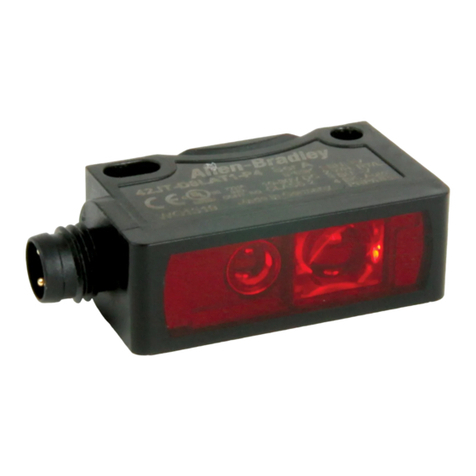
Rockwell Automation
Rockwell Automation VisiSight 42JT-P2LAT1 installation instructions
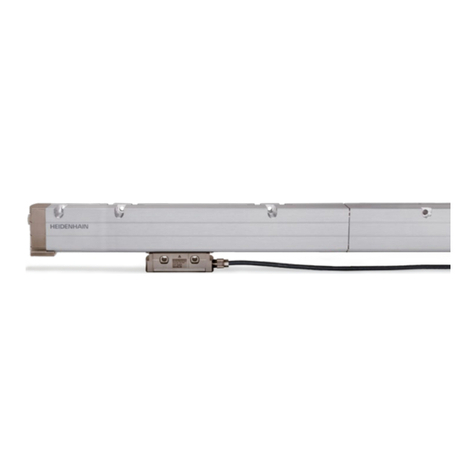
HEIDENHAIN
HEIDENHAIN LC 2x1 Mounting instructions
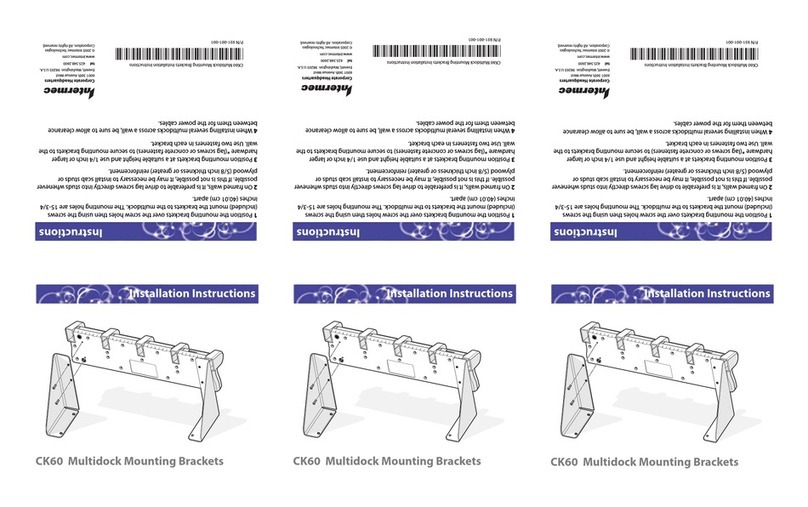
Intermec
Intermec CK60 Ethernet Multidock installation instructions
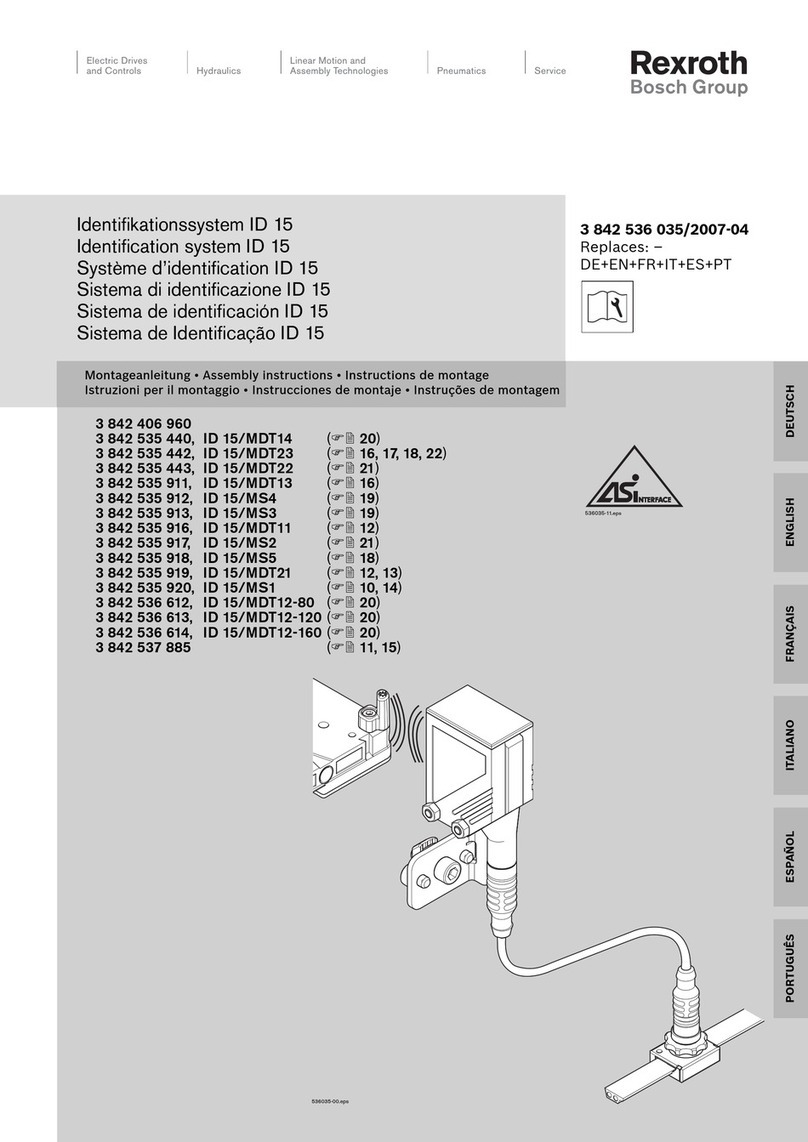
Bosch
Bosch Rexroth ID 15 Assembly instructions

Pepperl+Fuchs
Pepperl+Fuchs KVF-104-PF manual
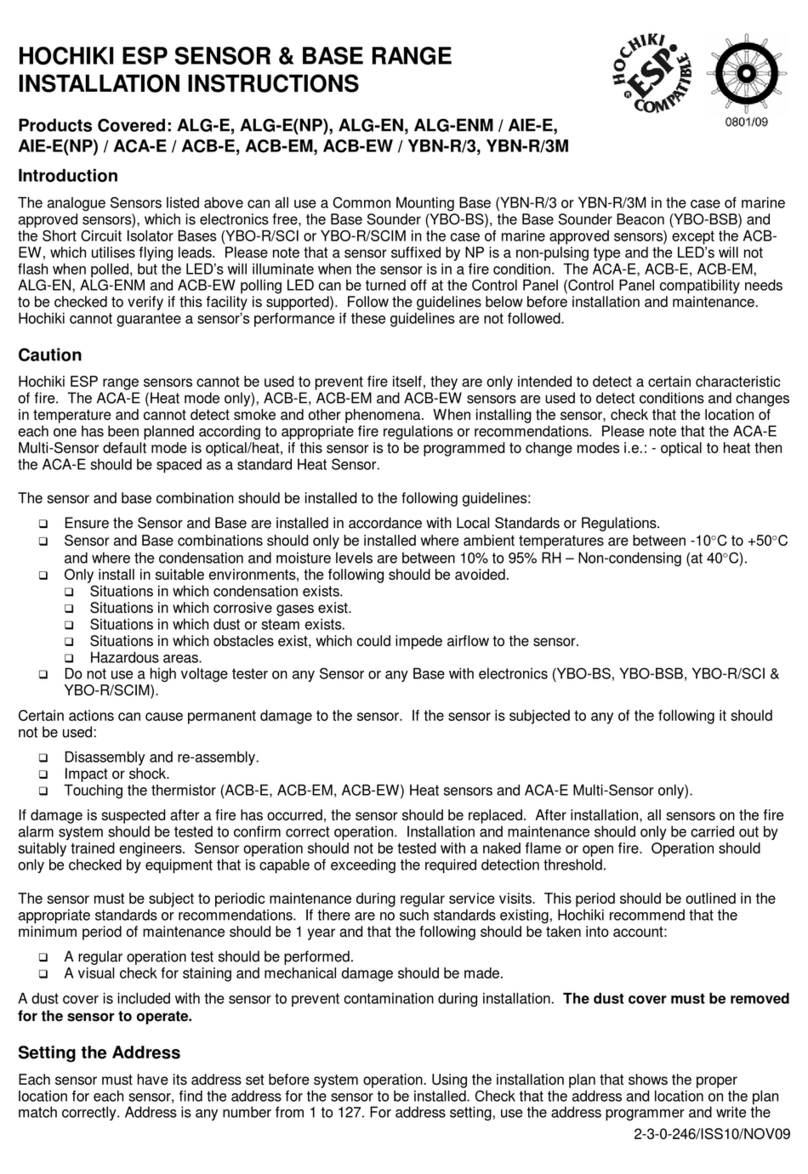
Hochiki
Hochiki ALG-E Installation instructions manual


